Byland Abbey
OS grid reference:- SE 548 789
The scenic ruins of Byland Abbey are located in a peaceful setting at New Byland, near the picturesque village of Coxwold in the North York Moors National Park.
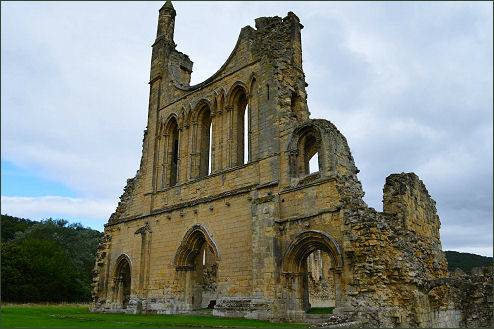
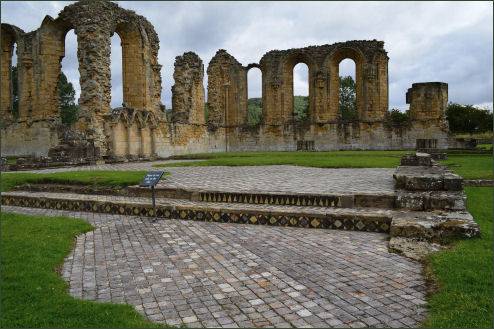
The abbey was founded at Calder during the reign of King Henry I by the Savigniac monks of Furness Abbey in Cumbria in 1135. The order had its origins in 1105 when Vitalis of Mortain established a hermitage in the forest of Savigny. The monks of the order later followed the Benedictine Rule, wore grey habits and founded daughter-houses.
A Scottish raid on Calder caused the monks to flee, they stayed temporarily at Hood, in north Yorkshire, on land granted by Gundreda d'Aubigny and her son Roger de Mowbray. After a difficult start and a number of moves the abbey settled at New Byland in 1147, when the Savignac order was merged the Cistercian order. The draining of the marshland and the construction of a magnificent church at Byland took over 30 years to reach completion.
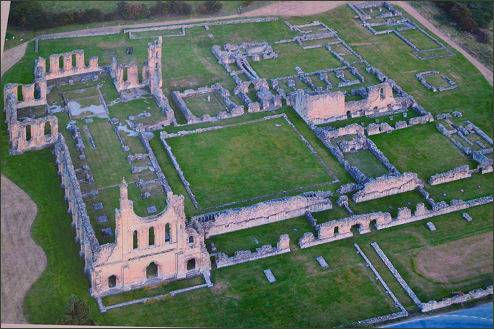
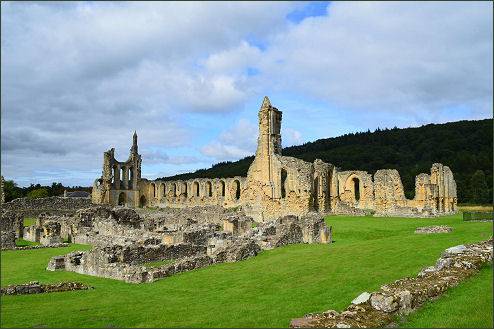
In October 1322 Byland Abbey was sacked by the army of Robert the Bruce, as the Scots pursued King Edward II, who had led an unsuccessful invasion of Scotland, when King Edward's forces were defeated at the Battle of Old Byland forcing him to flee from Rievaulx Abbey. Byland Abbey flourished at the new site and in the late fourteenth century was described along with Fountains and Rievaulx Abbey as "one of the three shining lights of the north". Byland was famed for its sheep rearing and wool exports. Its church was said to be among the finest twelfth century churches in Europe.
Byland Abbey was dissolved by King Henry VIII . The north however, still clung to Catholicism. The Pilgrimage of Grace was a large northern rebellion in protest at King Henry VIII's religious policies and the suppression of the monasteries. Adam Sedbar, Abbott of Jervaulx, a daughter house of Byland, was persuaded to join the rebellion, together with other local abbots from Fountains, Bridlington and Guisborough Abbeys. After being imprisoned in the Beauchamp tower in the Tower of London, he was executed for treason, on 2 June 1537 he was hanged, drawn and quartered at Tyburn by order of Henry VIII. On 30 November 1538 Byland Abbey voluntarily surrendered to the Crown, and the monks received a pension in exchange. The abbey was stripped of lead, glass, timber and anything of value and left as just a shell. The site was granted to Sir William Pickering.
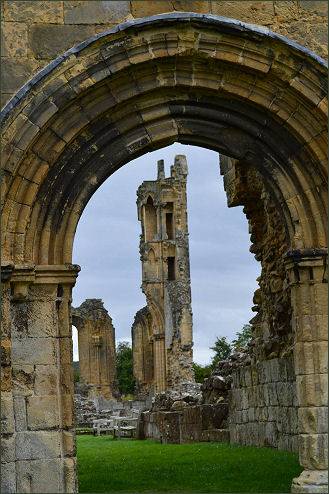
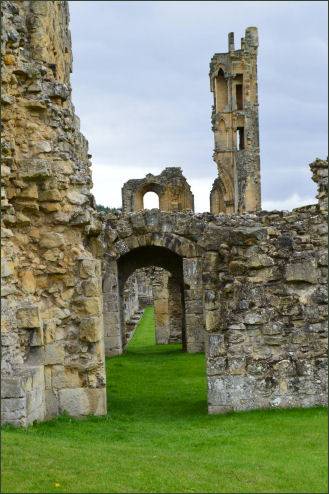
The imposing remains that are still standing include the lower half of a great rose window in the west front, which dates to the thirteenth century. The abbey church measured a 100 metres long and was by far the largest abbey church in England. Some of the brightly coloured medieval floor tiles have survived. An altar table was also recovered, which is now in Ampleforth Abbey, and a stone lectern base from the chapter house is the only example of its kind in Britain.
A little further from the abbey are remains of two fish ponds and a deer park.
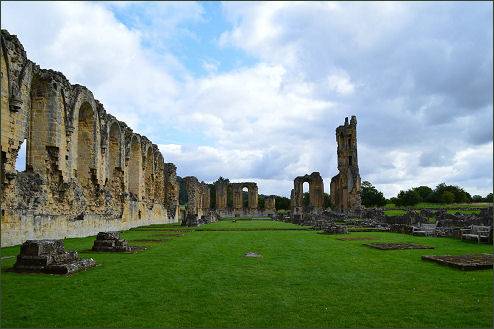
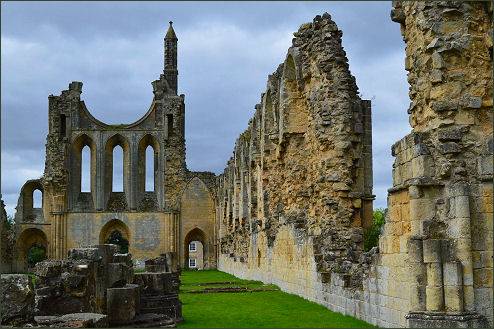
Byland Abbey is now in the care of English Heritage and has an onsite museum where visitors can acquire an insight into monastic life at the Abbey.
Abbeys and Churches of Yorkshire
